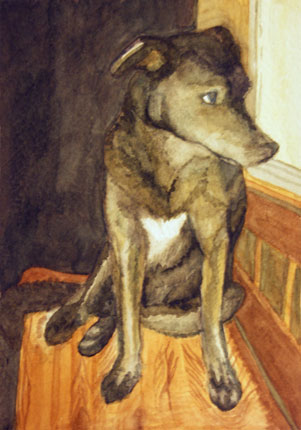
Watercolor painting by
Allison Lenker
Allison Lenker's watercolor learning experience:
Through our in class critique I learned that I need to create more contrast to emphasize the lighting within the appropriate composition. With the correct lighting a painting can be more powerful by pulling you into the areas you want to draw attention to. Using a composition style to compliment the feel of the painting also adds to the appeal of a good watercolor.
The effects of lighting in a watercolor are what brings it to life. By squinting and stepping back from your work you will be able to see the correct tones. By comparing the lightness to the darkness of an object you can hone in on the contrast. That contrast is what the viewer will see as the focus of the painting. It is also important to keep the shadows and highlights consistent. If they are not convincing it will make the painting unrealistic.
The composition is the foundation of a painting. If the composition doesn't convey the same idea as the lighting the painting may not be at its fullest potential. The size and placement of the subject within the picture plane can tell a story. If the subject is oversized and takes up a majority of the paper it can make you feel overwhelmed and confronted or claustrophobic. A small subject in a vast background makes you feel that the subject may feel lonely or quiet. A mid sized subject placed in the center of the picture can seem simple, plain, and straight forward. It's like it is saying, "Hi, here I am."
The composition really helps to solidify your idea within the painting.
Choosing the proper lighting and composition placement you can create a successful painting. The critique helped to set these ideas to memory so I can call on them whenever I paint.
